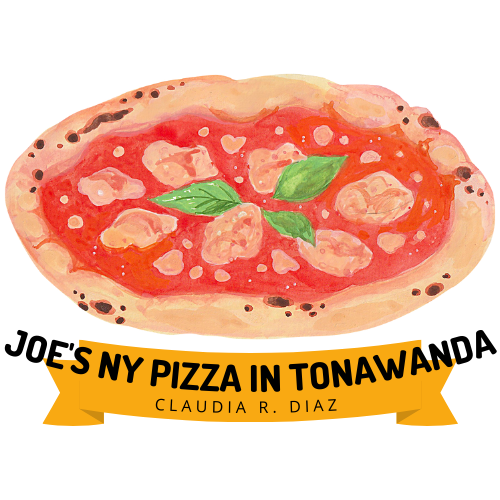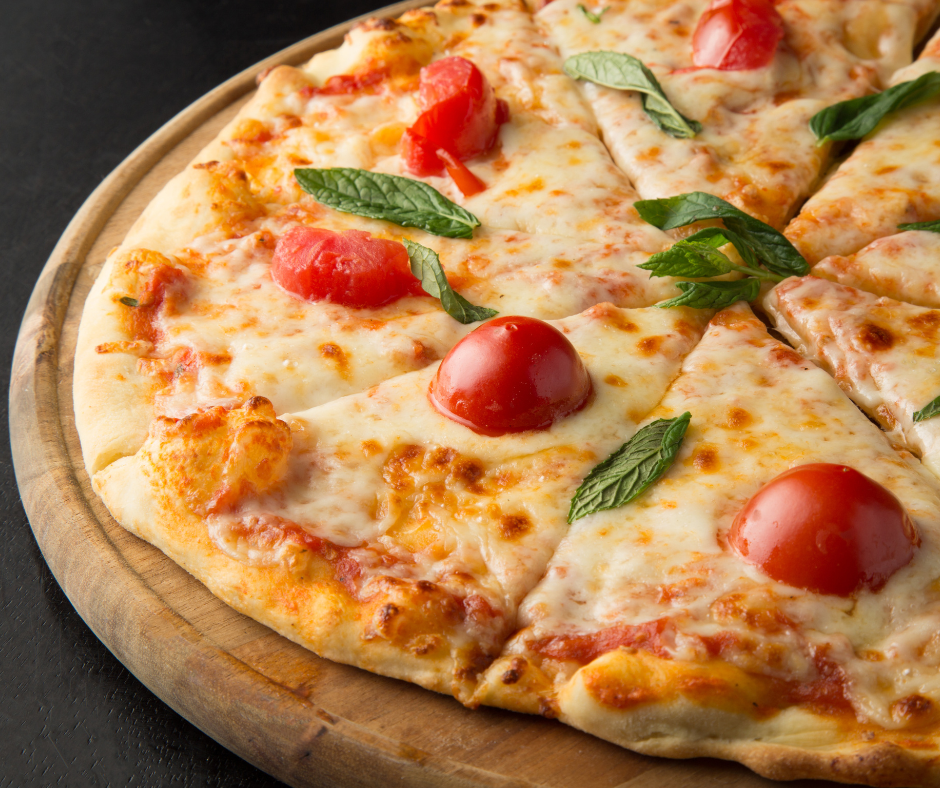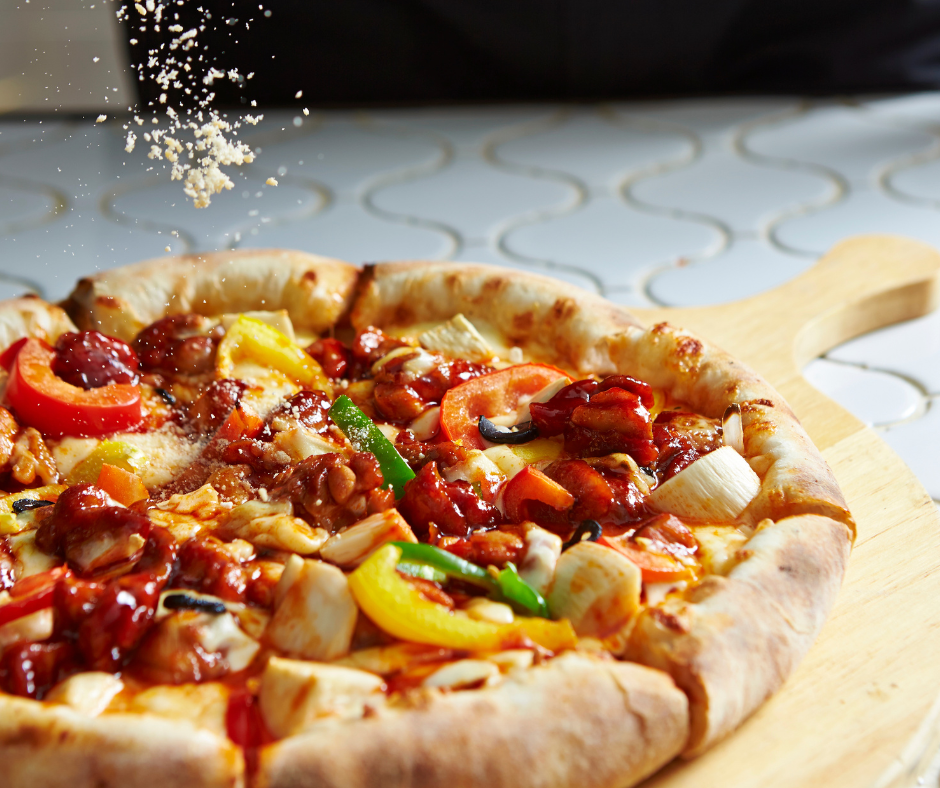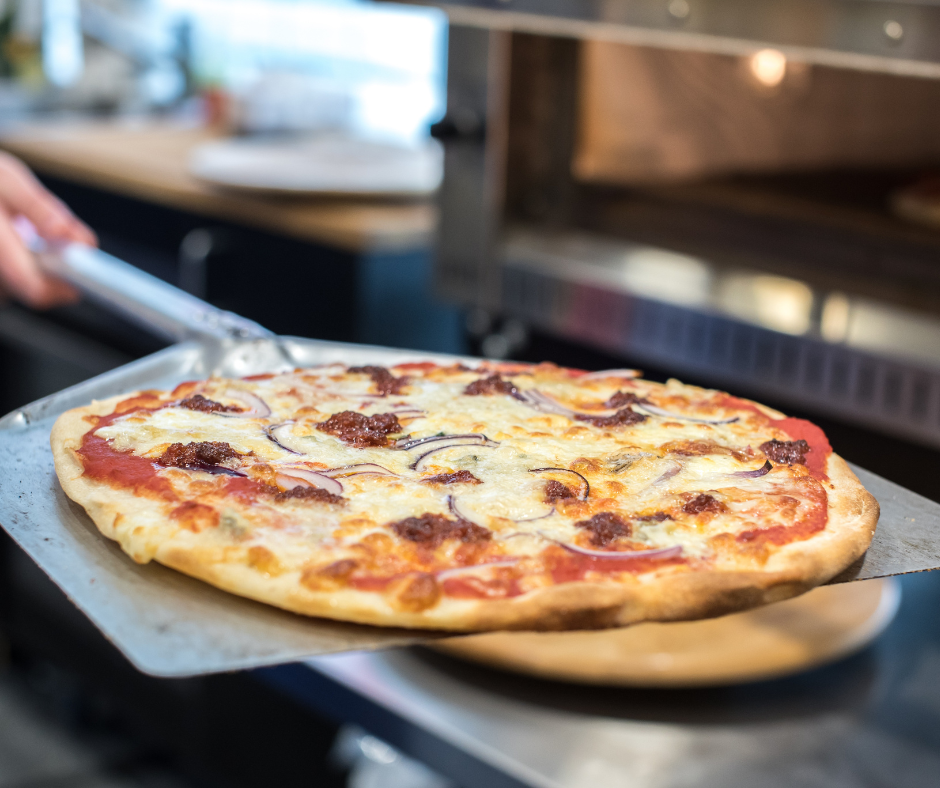Introduction
Debates can get pretty heated when it comes to the world of food. One such ongoing debate is the age-old question: Is pizza a pie? It might seem simple, but it has divided food enthusiasts and ignited passionate arguments.
A Brief Overview Of The Pizza Vs. Pie Debate And Its Significance In The Culinary World.
For years, people have debated whether pizza should be categorized as a type of pie. On one side, you have those who argue that pizza is a pie because it has a crust, sauce, and toppings, similar to traditional pies. Conversely, you have those who believe that pizza is its distinct category and should not be classified as a pie.
While it may seem trivial, the pizza vs. pie debate holds significance in the culinary world. It raises questions about how we define food categories and influences how we classify dishes. Arguments for both sides often focus on the key characteristics that define a pie and whether or not pizza meets those criteria.
Ultimately, the debate continues, and individuals can embrace whichever viewpoint resonates. Whether you consider pizza a pie or a unique creation, one thing is certain: it’s delicious and enjoyed by millions worldwide. So, the next time you bite into a slice of pizza, you can appreciate the ongoing debate and savor the culinary experience that this iconic dish brings.
What Defines A Pie?
Exploring The Definition Of A Pie And The Key Elements That Make It Distinct From Other Types Of Dishes.
Is pizza a pie or not? This culinary controversy has sparked passionate debates among food enthusiasts for years. To settle this long-standing question, we need to delve into the definition of a pie and examine the key elements that set it apart from other types of dishes.
A pie is typically a dish consisting of a baked crust, often made from pastry or dough, enclosing or covering a filling. It can be sweet or savory and is typically served as a main course or dessert. The crust is an essential pie component, providing structure and a delicious, flaky texture.
When we apply this definition to pizza, some argue that it does not meet the criteria of a pie. While pizza does have a baked crust, it differs in that it is typically a single-layered base topped with sauce, cheese, and various toppings. It lacks the enclosed or covered filling characteristic of a traditional pie.
However, others argue that pizza can be considered a type of pie. They argue that the crust serves as the pie’s base or “crust” and that the sauce, cheese, and toppings act as the filling. From this perspective, pizza fits the definition of a pie.
Ultimately, whether you consider pizza a pie depends on how strictly you define “pie.” These culinary debates are part of what makes food culture so fascinating, as opinions can vary widely. So, the next time you gather with friends or family, you can enjoy a lively conversation about whether pizza belongs in the pie category.
The Anatomy Of Pizza
There are strong arguments on both sides when it comes to the age-old debate of whether pizza is a pie. Let’s take a closer look at the characteristics of pizza and how they align or differ from the traditional notion of a pie.
Analyzing The Characteristics Of Pizza And How They Align Or Differ From The Traditional Notion Of A Pie.
- The Crust: A key element that sets pizza apart is its thin, crispy, and often doughy crust. Traditional pies, on the other hand, typically have a flaky and buttery crust.
- The Filling: Instead of a sweet filling like fruit or custard, pizza is loaded with savory ingredients such as cheese, sauce, vegetables, and meats. Pies, however, can have a wide range of fillings, including sweet and savory options.
- The Shape: Pizzas are typically round or square, while traditional pies are often round or rectangular.
- The Serving Style: Pizza is commonly served in individual slices, while pies are usually sliced into wedges.
Despite these differences, pizza and pie share some similarities. Both are baked dishes that often unite people and are enjoyed in various cultures worldwide. Ultimately, whether pizza is considered a pie may come down to personal interpretation.
In conclusion, it can be argued that pizza is its unique culinary creation, distinct from a traditional pie. So, the next time you enjoy a slice of pizza, savor its deliciousness without getting caught up in the pizza vs. pie debate.
Is Pizza A Pie?
There has long been a heated debate among food enthusiasts about ‘Is Pizza A Pie?’. While some argue that pizza is a unique and distinct creation, others contend that its characteristics align with a traditional pie. Let’s delve into the argument that pizza can be considered a type of pie due to its dough, filling, and crust-like qualities.
Delving Into The Argument That Pizza Can Be Considered A Type Of Pie Due To Its Dough, Filling, And Crust-like Qualities.
1. The Dough: Both pizza and pie share a common foundation – the dough. While pie dough is typically flaky or crumbly, pizza dough is more elastic and chewy. However, they both serve as a base that holds the fillings together.
2. The Filling: Pies are known for their sweet or savory fillings, and pizza is no exception. The toppings on a pizza, such as cheese, sauce, and various meats or vegetables, can be seen as the filling. The combination of flavors and textures makes both pies and pizzas so enjoyable.
3. The Crust-like Qualities: Pies are known for their crust, and pizzas have a similar feature. The outer edge of a pizza, often referred to as the crust, serves as a border that contains the toppings. It adds structure and can vary in thickness or style, like a pie crust.
While the debate may continue, it’s clear that pizza shares some fundamental characteristics with traditional pies. Whether you classify it as a pie or a unique creation, one thing is certain – pizza is loved by millions worldwide for its delicious combination of dough, filling, and crust-like qualities.
The Case Against Pizza As A Pie
Examining The Counterarguments And Reasons Some Believe Pizza Should Not Be Classified As A Type Of Pie.
The debate surrounding whether pizza should be considered a type of pie has ignited passionate discussions among food enthusiasts. While many argue that pizza is indeed a type of pie, there are counterarguments worth exploring:
- Crust: One of the main points against classifying pizza as a pie is the nature of its crust. Unlike traditional pies, which typically have a flaky or crumbly crust, pizza has a thin, chewy crust made from yeast-leavened dough.
- Savory vs. Sweet: Pies are commonly associated with sweet fillings, such as fruit, custard, or cream. Conversely, pizza is typically topped with savory ingredients like cheese, tomato sauce, and various types of meat.
- Structure: Traditional pies are designed with a bottom crust, a filling, and a top crust, creating a contained structure. In contrast, pizza lacks a separate top crust, giving it a more open-faced and versatile composition.
- Historical Origins: Pizza has roots in Italian cuisine, while pie can be traced back to ancient civilizations. Some argue that the cultural and historical differences between pizza and traditional pies warrant separate classifications.
Ultimately, classifying pizza as a pie remains a matter of perspective and personal interpretation. While some may argue that pizza meets the criteria to be considered a type of pie, others highlight the distinct characteristics that differentiate it. Ultimately, it’s up to each individual to decide whether they consider pizza a pie or a unique culinary creation.
The Historical Context
Tracing The Origins Of Pizza And Pie To Understand How Their Development Shapes The Ongoing Debate.
The ongoing pizza vs. pie debate has sparked spirited discussions among culinary enthusiasts, with opinions varying widely. To settle this controversy, it’s essential to delve into the historical context surrounding the development of these beloved dishes.
Pizza’s origins, dating back to ancient civilizations, have a rich history. The ancient Greeks and Egyptians enjoyed flatbreads topped with various ingredients, similar to modern-day pizza. However, in Naples, Italy, during the 18th and 19th centuries, pizza as we know it today started to take shape. With its thin crust, wood-fired oven, and traditional toppings, Neapolitan pizza became a culinary staple in Italian cuisine, eventually spreading worldwide.
On the other hand, pies have a longer history, tracing back to ancient times. The concept of enclosing fillings within a crust can be found in various cultures, including the Egyptians, Romans, and Greeks. Pies in different forms have been prepared throughout history, ranging from sweet fruit pies to savory meat pies. From English meat pies to American apple pies, this beloved dish has evolved and diversified globally.
While pizza and pie involve dough and toppings, the key difference lies in the execution. Pizzas typically have a thin, yeast-based crust topped with savory ingredients, while pies generally feature a thicker, pastry-like crust and can be sweet or savory in flavor.
Ultimately, cultural influences, regional preferences, and personal taste often shape the pizza vs. pie debate. The significance of these dishes in various cuisines only adds to the ongoing culinary controversy, making it a topic worth discussing among food enthusiasts.
Cultural Perspectives
Exploring How Different Cultures Interpret And Categorize Pizza And Pie, Shedding Light On The Varying Viewpoints.
Pizza or pie? A culinary controversy has sparked debates among food enthusiasts for years. While some may argue that pizza is a type of pie, others firmly believe they are distinct entities. To settle this debate, it becomes important to consider cultural perspectives and how different cultures perceive and classify these beloved food items.
In many Western cultures, pizza is typically seen as a savory dish that consists of a thin or thick crust topped with sauce, cheese, and an array of toppings. It is often considered a type of flatbread or open-faced pie. On the other hand, pie is traditionally associated with desserts and is made with a sweet or savory filling encased in pastry.
However, cultural interpretations can vary. In some European countries like Italy, where pizza originated, it is deemed as its unique culinary creation. Italians deeply love pizza and consider it a separate category altogether. Similarly, in certain regions of the United States, the terms “pizza” and “pie” are used interchangeably, further adding to the complexity of the debate.
Ultimately, whether you view pizza as a pie or a distinct dish depends on your cultural background and personal interpretation. The important thing to remember is that pizza and pie are delicious in their own right, and regardless of how you categorize them, they will continue to bring joy to food lovers worldwide.
Celebrity Chefs Weigh In
Gaining Insights From Renowned Chefs And Their Stances On Whether Pizza Should Be Considered A Pie.
The debate over ‘Is Pizza A Pie?’ has sparked heated discussions among food enthusiasts for years. To settle this culinary controversy, let’s turn to the experts – celebrity chefs who have dedicated their lives to the art of cooking and gastronomy.
One famous chef who weighs in on the topic is Anthony Bourdain. He firmly believes that pizza is not a pie but a unique entity. According to Bourdain, a pie involves filling enclosed by pastry, while a pizza consists of a crust topped with sauce, cheese, and various toppings. He argues that the absence of the top pastry makes it distinct from a traditional pie.
On the other hand, some chefs like Mario Batali disagree and consider pizza to be a type of pie. They argue that the term ‘pie’ encompasses any dish consisting of a crust with a filling or topping. In their view, the similarities between the structure of a pizza and a classic pie justify labeling pizza as a type of pie.
Ultimately, whether you consider pizza a pie may come from a personal interpretation and cultural perspective. Regardless of the classification, one thing is certain – pizza is undeniably one of the most beloved and iconic foods worldwide, captivating taste buds and fueling passionate discussions.
In conclusion, the pizza vs. pie debate may never have a definitive answer, but exploring the viewpoints of renowned chefs sheds light on the diverse opinions within the culinary world.
Public Opinion: Polls And Surveys
Are you Team Pizza or Team Pie? It’s a question that has sparked countless debates and divided food lovers for years. To settle the culinary controversy once and for all, numerous polls and surveys have been conducted to gauge public opinion on whether pizza is a pie or not.
Presenting The Results Of Surveys And Polls Conducted To Gauge Public Opinion On The Pizza Vs. Pie Debate.
Over the years, multiple surveys and polls have sought to determine where most of the public stands on this hotly debated topic. The results, however, have been quite divided, highlighting the passionate and divergent views on the matter.
In a recent online poll conducted by a popular website’s Food and Dining section, 55% of respondents considered pizza a type of pie, while the remaining 45% disagreed. Similarly, a nationwide survey by a renowned culinary magazine found that 52% of participants classified pizza as a pie, while the remaining 48% viewed it as a distinct entity.
The heated discussions around the pizza vs. pie debate have also spilled onto social media platforms. Several Twitter polls have indicated a close split, with different regions and cultural backgrounds seemingly influencing individual preferences.
While there is no definitive answer to ‘Is Pizza A Pie?’, one thing is certain – the debate continues to fuel passionate conversations among food enthusiasts worldwide. Whether you consider it a pie, a distinct dish, or something in between, one cannot deny the universal love and enjoyment inspired by a delicious pizza or a mouthwatering pie.
The Middle Ground: Pizza Pie
The perennial debate about whether pizza can be considered a type of pie or vice versa has long confounded food enthusiasts. However, there exists a culinary creation that combines elements of both pizza and pie, aptly named the pizza pie.
Introducing The Concept Of A Hybrid Dish Known As Pizza Pie, Which Combines Elements Of Both Pizza And Pie.
Pizza is a unique creation that combines the best of both worlds. It features a flaky, buttery crust reminiscent of a traditional pie while also boasting the signature toppings and flavors found on a classic pizza. This delightful amalgamation of textures and tastes satisfies even the most discerning palates.
Unlike traditional pizza, pizza pie typically features a deep-dish crust that accommodates generous toppings. This allows for a more substantial and filling experience. The crust is a sturdy foundation, ensuring that the toppings and cheese meld harmoniously without overwhelming the palette.
Pizza enthusiasts argue that this hybrid dish offers the best pizza and pie. The crust provides a comforting and familiar sensation akin to biting into a warm, homemade pie, while the toppings and flavors evoke the beloved characteristics of an authentic pizza.
In conclusion, the concept of pizza pie offers a delightful compromise in the age-old debate between pizza and pie. True food lovers can savor the best of both worlds in this culinary creation, experiencing the rich flavors and textures that make each dish unique. Whether you consider it a pizza, a pie, or something entirely distinct, pizza pie has undoubtedly earned a place in the hearts and stomachs of food enthusiasts worldwide.
Bringing The Debate To An End
Examining Different Approaches To Resolve The Culinary Controversy And Potentially Settle The Pizza Vs. Pie Debate.
Is pizza a pie? This question has sparked heated discussions and debates among food enthusiasts for years. While some argue that pizza is a type of pie, others firmly believe it belongs in its category. So, how can we settle this culinary controversy once and for all?
One approach to resolving the pizza vs. pie debate is examining the technical definition of a pie. According to Wikipedia, a pie is a baked dish with a sweet or savoury filling enclosed in pastry dough. By this definition, it can be argued that pizza fits the criteria as it consists of a savory filling, such as cheese, sauce, and various toppings, enclosed in a bread-like crust.
However, some argue that pizza differs from traditional pies due to its unique characteristics. Pizza is typically served in a circular shape, with a thin or thick crust, and is often consumed as a main dish. Moreover, the toppings and flavors associated with pizza are distinct and separate them from traditional pie offerings.
Ultimately, whether you consider pizza a pie may depend on your perspective and culinary preferences. While some may find comfort in categorizing pizza as a pie, others appreciate its distinctiveness as a separate culinary creation.
In the spirit of open-mindedness, let’s embrace the diversity of opinions and continue enjoying the deliciousness of pizza and pie, no matter how we define them.
Conclusion
Summarizing The Key Points Discussed And Offering Personal Thoughts On Whether Pizza Can Be Classified As A Pie.
Now you should know ‘Is Pizza A Pie?’. After examining the Pizza vs. Pie debate, it is clear that there are valid arguments on both sides. However, based on the definitions and characteristics of a pie, it seems more appropriate to classify pizza as a distinct culinary creation rather than a traditional pie.
While a pie typically consists of a pastry shell with various fillings, the pizza features a bread-like crust topped with sauce, cheese, and other toppings. The absence of a pastry shell sets pizza apart from traditional pies.
The origins and cultural significance of pizza also support its distinction from pies. Pizza has a rich history in Italian cuisine and has evolved to become an iconic dish worldwide. It has its unique preparation methods, culinary traditions, and styles.
However, it’s essential to note that language and culinary definitions can be flexible, and the classification of pizza as a pie can vary depending on regional preferences or interpretations. Some people may consider pizza a subset of pies, but the defining characteristics and cultural significance point towards pizza being a distinct culinary creation.
Ultimately, whether pizza is seen as a pie or not, it remains a beloved and delicious dish enjoyed by people around the globe. The Pizza vs. Pie debate may continue, but the most important thing is that individuals can savor the unique flavors and experiences that both pizza and pies offer.

Looking for delicious pizza and authentic Italian cuisine? Look no further than Claudia R. Diaz at Joe’s NY Pizza in Tonawanda! Our menu features a wide variety of classic dishes and innovative creations, all made with the freshest ingredients and prepared with the utmost care. Whether you’re in the mood for a traditional Margherita pizza or something a little more adventurous, like our Buffalo chicken pizza or shrimp scampi pasta, Claudia R. Diaz has something to satisfy every craving. So why wait? Visit us today and experience the best Italian food in Tonawanda! #ClaudiaRDiaz #JoesNYPizzaTonawanda #ItalianFood #PizzaLovers #FoodiesUnite



